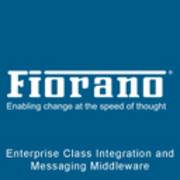Message Queue Software facilitates communication between distributed applications, enabling improved scalability and system reliability by decoupling components.
MQ Software ensures seamless message delivery across networks by enabling asynchronous communication, reducing system bottlenecks. It supports various application integrations, promoting efficient communication across different platforms. Users appreciate its role in maintaining data integrity and resilience in distributed systems, often highlighting its capability to handle simultaneous requests efficiently.
What are the critical features?Mq Software is utilized in industries like finance for transaction processing, in retail for managing customer orders, and in telecommunications for handling service requests. Its ability to quickly process high volumes of messages makes it valuable in these sectors.
This software is essential for organizations seeking to enhance communication between fragmented systems. By providing a reliable message exchange platform, it simplifies the complexity of connecting multiple applications and services within a business.




























Message Queue Software boosts data processing by queuing messages, enabling asynchronous communication between different systems. This way, systems can process data at their own pace, ensuring efficiency and reliability. You benefit from its ability to manage workloads and prioritize essential tasks, which improves overall system performance.
What are the security features of Message Queue Software?Message Queue Software provides various security features, including encryption, authentication, and authorization. Encryption ensures messages are unreadable during transit, authentication verifies users and systems, while authorization determines what actions users and systems can perform. These features safeguard your data and enhance trust in communications.
How can you scale Message Queue Software?Scaling Message Queue Software can be achieved by leveraging clustering and sharding. Clustering allows you to distribute the workload across multiple nodes, improving availability and fault tolerance. Sharding divides the message data into smaller, manageable parts, distributing them across various systems, enhancing performance and enabling horizontal scaling.
What metrics should you monitor for Message Queue Software?Key metrics to monitor include queue length, message throughput, error rates, and latency. Queue length shows the number of messages waiting to be processed, while throughput measures how many messages are processed over time. Error rates identify communication problems, and latency measures the time taken for messages to travel between sender and receiver. Monitoring these helps you optimize performance and detect issues early.
What are the integration capabilities of Message Queue Software?Message Queue Software provides comprehensive integration capabilities, supporting multiple platforms and languages. You can seamlessly integrate with microservices architectures, legacy systems, and cloud environments. This flexibility allows you to connect disparate systems, streamline workflows, and ensure consistent data flow across your organizational infrastructure.